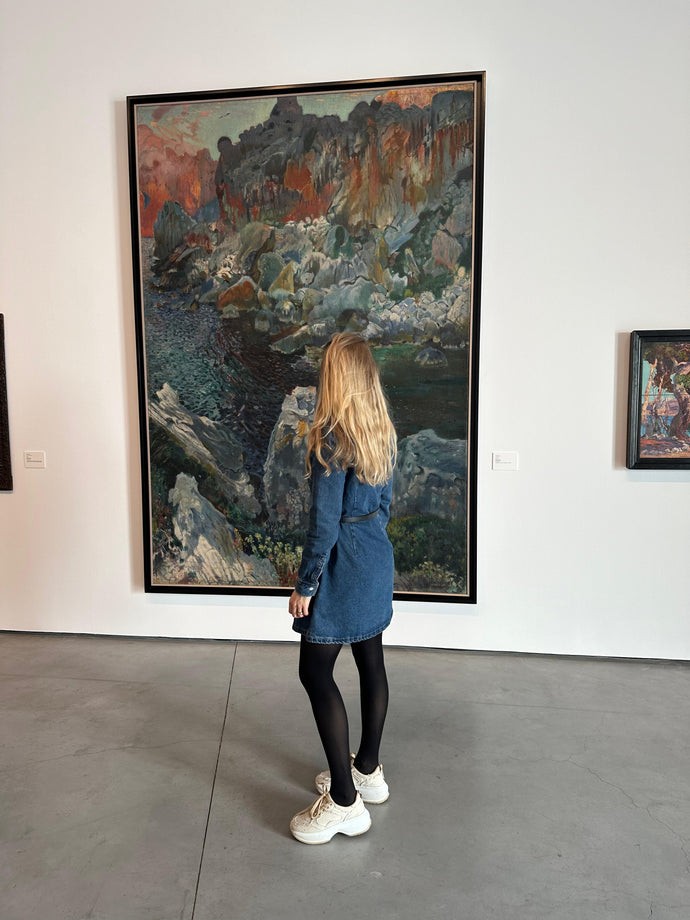With art sales in 2016 exceeding $45billion (according to the 2017 TEFAF market report), an increase 1.7% increase over 2015, and a further increase expected this year, the art market is booming right now. However, as with any tradable commodity, investing in art carries risk. In fact, some might argue that it holds more risk than most. But what other investment provides so much day-to-day pleasure? Certainly, staring at your Bitcoin wallet will inspire you less than a great piece of art hung in your living space.
Art is amazing, we already know that. But how should you invest in art? Many people will tell you to invest on your personal preference. After all, you’re going to have to live with the art, so why not get something you love? The other view is that it is pointless investing in something that is unlikely to return a profit. But who can predict the future? The current boom could continue for decades to come. Alternatively, art value could crash next year. One thing is for certain — artists will continue to create inspiring work, and art lovers will always be there to buy it. Art as an investable commodity is extremely likely to always exist.
However, if you plan on investing, rather than just collecting it, it is advisable that you have some semblance of understanding of the current art market trends. Here is where Artpiq are here to help…
What art should I invest in?
Whether you’re into Rubens, Rauschenberg or Richter, it is important to understand that different art has different pros and cons from an investment point of view. A well-known name, or a current trend will immediately increase the likelihood of future profit, though it is hard to know by just how much, and it will require £millions of initial capital. Investing in new and upcoming artists, on the other hand, carries significant risk, but costs much less, and has the potential of exponential profit. Just think of how much money we all could make if we spot the next Da Vinci before anyone else.
Just to give you some factual context, over the past two years investment in new, emerging artists has declined. With market instability comes conservative investment. Serious art investors are reverting back to old masters, and obvious trends. Whilst this could suggest that you keep well away from emerging artists, it could also mean that the best emerging artists are still out there to invest in — before they’ve made it big. You could pick up a future £100 million painting for less than £2000. And whilst it may take a long time to accrue that value, you’ll get the pleasure of experiencing it every day.
There is no ‘right’ art to invest in. But if you want the best value for money right now, and potential future profit, investing in new emerging artists is likely to be the best option. OK, your painting might not end up reaping a million pound profit. But you will have more choice. Find a work of art that you connect with, are emotionally invested in, and love seeing every day, and if you have a keen eye, and the market goes your way, your small initial output has the potential to really pay off in the future — much more so than a boring Forex investment would.
How to invest in emerging art
One of the best places to start when making the decision to invest in art is by visiting galleries — either online, like Artpiq, or in person. Knowing what sort of art you like will make choosing what art to invest in a whole lot simpler.
It is also worth doing research into the artists that catch your eye. Though it is not a certainty for future profit, knowing that an artist comes from a good background — either through exhibitions or academic study — often increases the likelihood of future profit. This is especially the case if the artist comes from one of the best art schools.
Alternatively, if you’re really not sure about which art to invest in, you could consult an art expert. If you’re willing to pay, you can contact a professional art consultancy, or visit galleries who's assistants will be able to give you in-depth guidance. You can also get in contact with one of Artpiq’s experts if you would like some free advice.
Investing in art is in the end a personal decision. You should always buy artworks that you connect with. Even though there is always a certain amount of risk involved, having a piece of art that you love is always a sounder investment than on-trend art you don’t like. Whether it ends up being a future master, or just a minor success, art should always have that emotional impact. It’s what makes art valuable after all!


